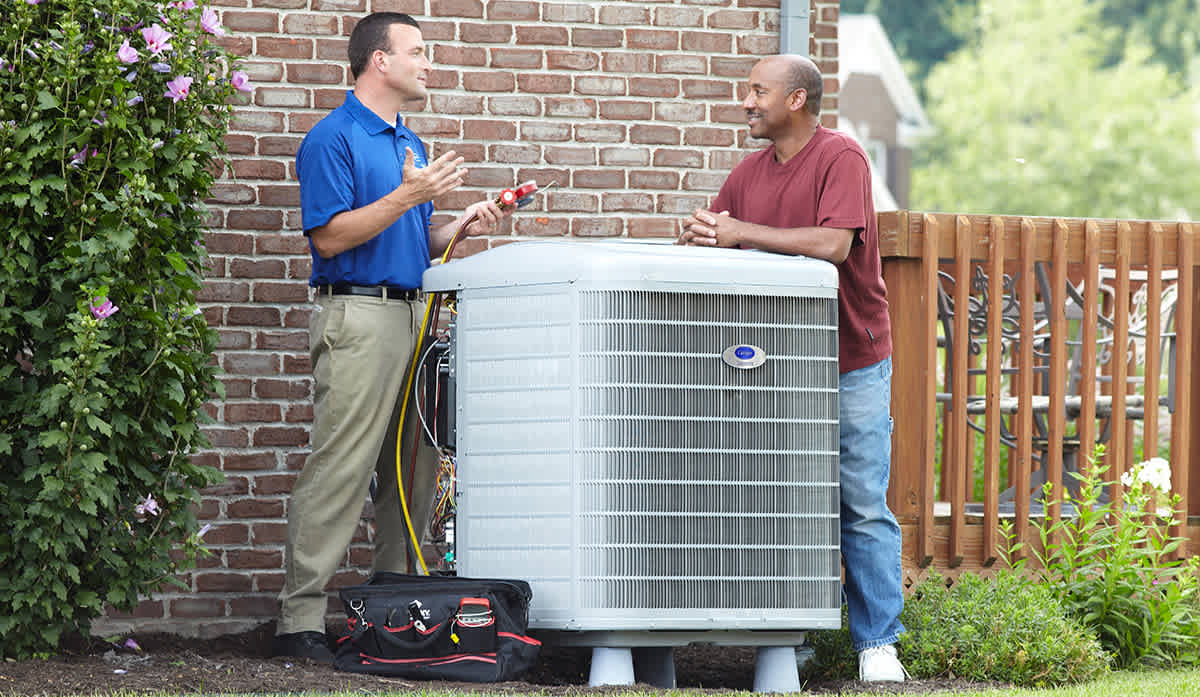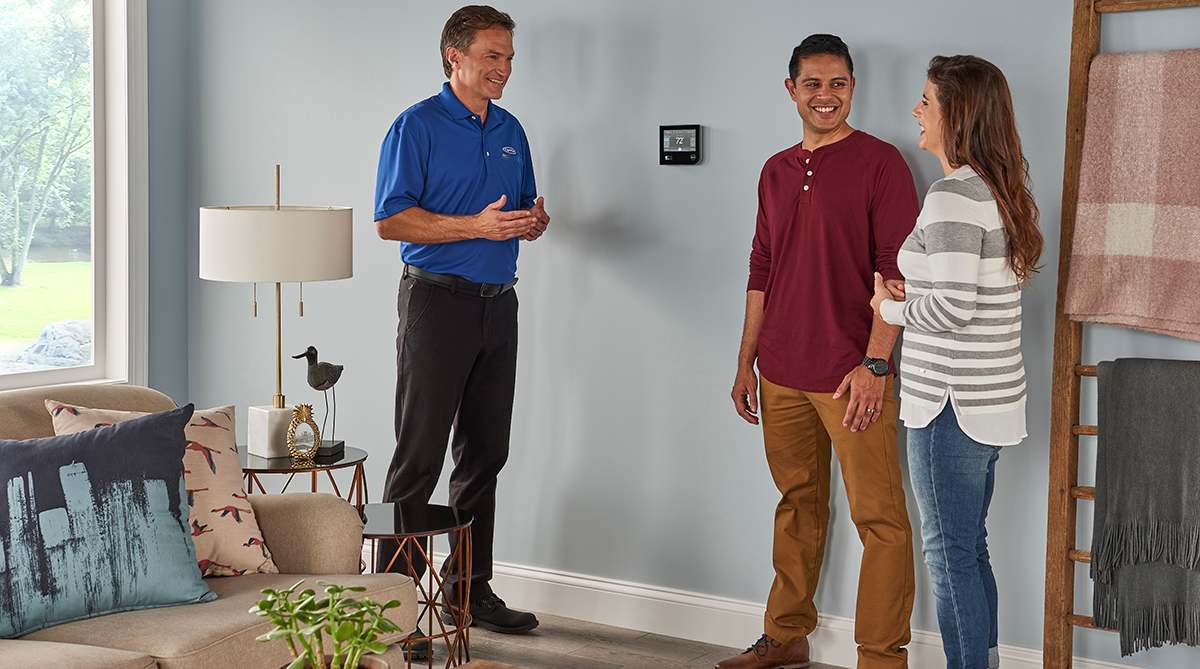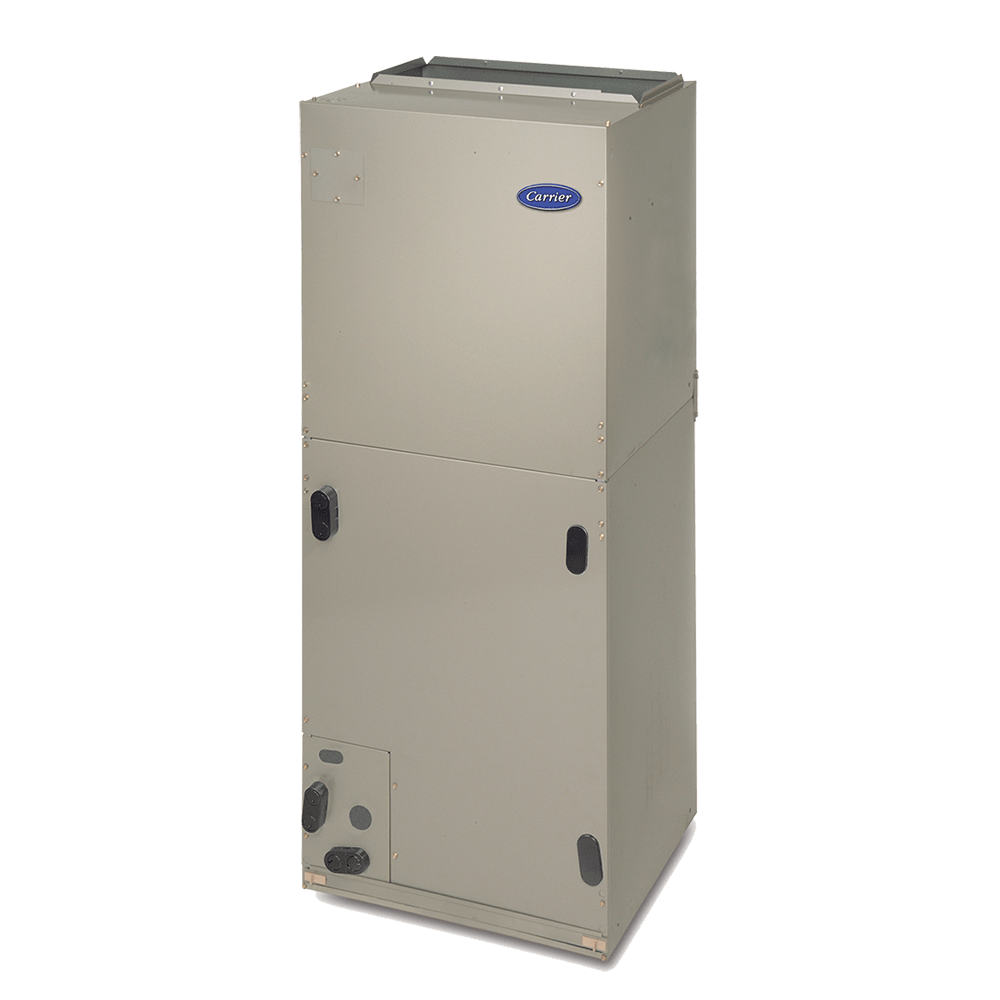What Is An Air Handler Unit for HVAC Systems?
What is an Air Handler?
An air handler unit, also known as a fan coil is a crucial component of an HVAC (Heating, Ventilation, and Air Conditioning) system, responsible for circulating conditioned air throughout your home. The primary function of an air handler unit is to regulate and distribute both heated and cooled air produced by the HVAC system .
Typically located indoors, air handler units connect to ductwork that runs throughout the home. They work in tandem with other HVAC components, such as the furnace , air conditioner, or heat pump , to ensure that air is properly filtered, conditioned, and distributed.
Air handler units feature a fan that helps circulate the air. This fan can be set to different speeds to control airflow and provide optimal comfort. Additionally, the air handler unit contains a heating element, cooling coil, and a drain pan to collect any condensation formed during the cooling process.
Overall, air handler units are essential for maintaining a comfortable and healthy indoor environment, ensuring that conditioned air reaches every room in your home, providing consistent temperature control and improved air quality.
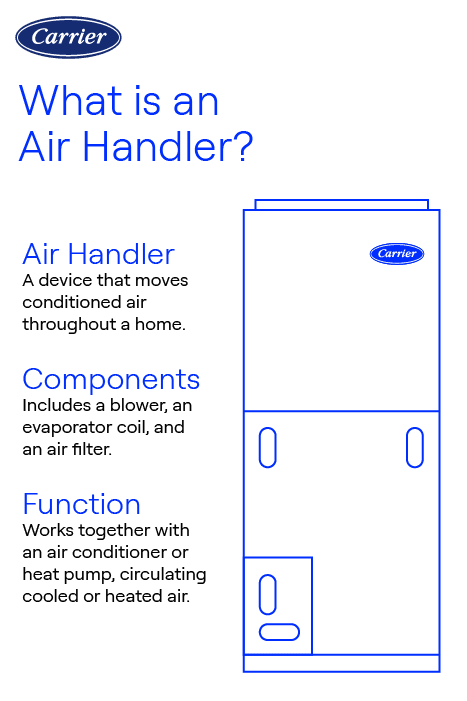
Why is an Air Handler Important?
- Improved Comfort: A high-quality air handler regulates humidity levels and ensures consistent airflow, helping to eliminate hot or cold spots and create a more balanced indoor environment. Many modern systems include variable speed motors for enhanced comfort and control.
- Better Air Quality: The air handler continuously moves air through your HVAC filters, helping to trap dust, allergens, and other particles, which improves your home’s indoor air quality.
- Increased Energy Efficiency: With features like variable speed operation, air handlers can adjust output to match your home’s needs, reducing energy usage and helping you save on heating and cooling bills without sacrificing comfort.
Key Components of an HVAC Air Handler
Understanding the key components of an air handler unit can help you make informed decisions regarding HVAC maintenance and upgrades. Let's take a closer look at three important components:
Evaporator Coil and Condenser Coil
The evaporator coil absorbs heat from the indoor air, while the condenser coil releases heat to the outdoor environment. These coils work together to cool and dehumidify the air before it is distributed throughout your home.
Blower Motor and Fan
The blower motor powers the fan, which circulates conditioned air through the ductwork and into various rooms, ensuring even air distribution throughout your home.
Air Filter
Damper
Drain Pain and Condensate Drain
Optional Electric Heat Strip
With an optional electric heat strip, a fan coil can also provide heat to your home if you live in milder climates.
By understanding these key components, you can better appreciate the importance of regular maintenance and proper functioning. If you're experiencing issues with your air handler unit or considering an upgrade, contact your local Carrier dealer for professional assistance. Our range of air handlers is designed to provide reliable performance and exceptional comfort for your home.
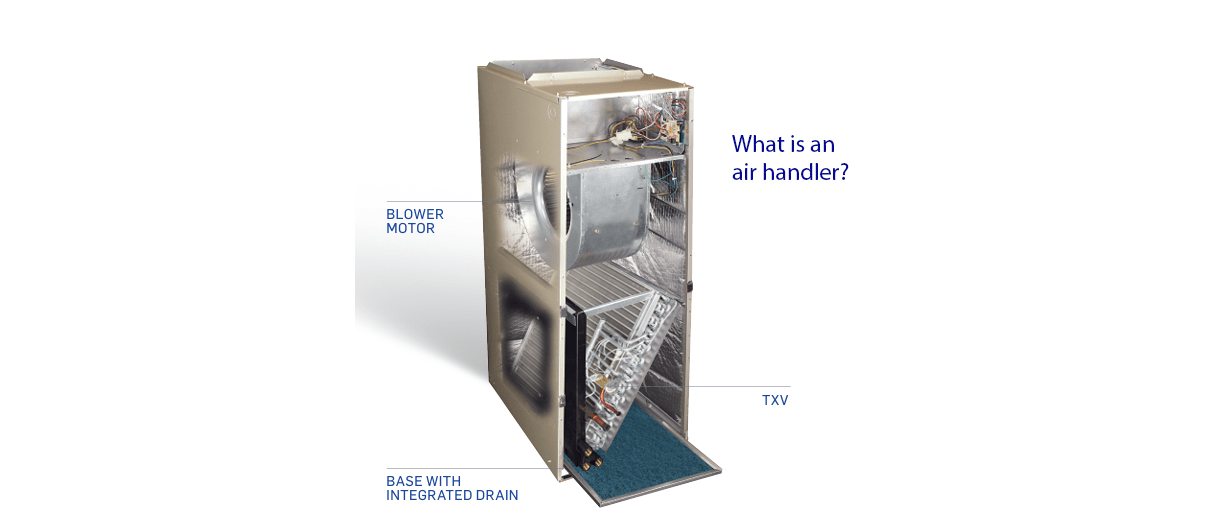
Types of Air Handling Units
Single-Speed Air Handlers
Variable-Speed Air Handlers

Who Needs an Air Handler?
- Homes with a Heat Pump System: Since heat pumps don’t have a built-in blower like a furnace, they rely on an air handler to distribute heated or cooled air throughout the home.
- Homes With an Air Conditioner powered by electricity: Homes with an air conditioner powered by electricity often use a fan coil (air handler) to circulate the cooled air throughout the house. The fan coil contains the blower fan and the cooling coil, which works with the outdoor AC unit to cool your home. As for heating, if the home doesn’t have a gas furnace, the air handler can be paired with an electric heat source such as electric resistance heaters inside the air handler.
Common Air Handler Problems
A properly functioning air handler unit is crucial for the overall performance of your HVAC system. However, like any mechanical equipment, air handler units can experience issues over time. Understanding common air handler problems can help you identify and resolve them efficiently. Here are a few common issues to be aware of:
Clogged Air Filters
Clogged air filters are a common problem, restricting airflow and causing your HVAC system to work harder and less efficiently. This not only reduces system performance but can also lead to higher heating and cooling bills. Regularly checking and replacing air filters can help maintain optimal airflow and improve indoor air quality. Learn more about how to replace air filters and how often to replace air filters .
Faulty Blower Motors and Their Troubleshooting
Faulty blower motors can lead to reduced airflow, uneven heating or cooling, and unusual noises. Troubleshooting may involve checking for power supply problems, loose connections, or worn-out motor bearings. Professional assistance is recommended for motor repairs or replacements.
Condensate Drain Issues and Maintenance
Air handlers produce condensation that is drained through a condensate drain line. Over time, the drain line can become clogged with debris, leading to water leaks and potential water damage. Regular maintenance, such as inspecting and cleaning the condensate drain line, can prevent these issues and ensure proper drainage.
By understanding these common air handler unit problems and their solutions, you can take proactive measures to keep your HVAC system running smoothly. Regular maintenance and professional inspections can help identify and address any issues before they become major problems.
Maintenance Tips for HVAC Air Handlers
- Regular Filter Changes: Changing the air filters regularly helps maintain good air quality and prevents dust buildup that can strain the air handler’s components.
- Annual Inspections: Scheduling a professional inspection each year allows for early detection of wear and tear or potential issues, keeping your system in top shape.
- Keep the Area Clean: Ensure the space around the air handler is free of dust, debris, and clutter to promote proper airflow and prevent blockages.
- Listen for Unusual Noises: Pay attention to any strange sounds coming from the air handler, as these can indicate mechanical problems that need immediate attention.
How Residential Air Handler Units Work
Air handlers play a crucial role in HVAC systems, ensuring optimal air circulation, temperature control, humidity regulation, and air distribution. Understanding how air handlers work can help you make informed decisions for your residential HVAC needs.
Air Circulation and Temperature Control
Air handlers pull in air from the surrounding environment through return ducts. This air is passed through filters to remove impurities and allergens. The conditioned air is then heated or cooled to achieve the desired temperature using a heating or cooling coil. The air handler unit's blower pushes the conditioned air back into living spaces through supply ducts.
Humidity Regulation and Dehumidification
Air handlers help regulate humidity levels in your home. The cooling coil within the air handler removes moisture from the air, reducing humidity. In humid climates, air handlers equipped with dehumidification features can further enhance indoor comfort by removing excess moisture from the air.
Air Distribution and Zoning
Air handlers ensure efficient air distribution throughout your home. They can be connected to a network of ducts that deliver conditioned air to different rooms or zones. By controlling the airflow to each zone, air handlers enable temperature customization and energy efficiency.
Connect With Your Local Carrier Dealer On Residential Air Handlers
At Carrier, we offer a range of air handlers designed to meet your specific residential HVAC requirements. Our air handler units are engineered for superior performance, reliability, and energy efficiency. If you're looking for an air handler that provides optimal air circulation, temperature control, humidity regulation, and air distribution, explore our range of air handlers.
Frequently Asked Questions About Air Handlers
Explore Carrier Air Handlers
Choosing a Carrier air handler ensures reliable and efficient air circulation throughout your home, improving comfort and air quality. Carrier air handlers are designed to work seamlessly with your HVAC system, offering quiet operation and consistent airflow. Their energy-efficient performance can help reduce heating and cooling bills while maintaining optimal temperature control year-round. Explore Carrier's line of fan coils today.
Compatible with Infinity system outdoor units and includes a variable-speed fan that supports premium energy savings and comfort features.
Multi 5-speed fan for enhanced energy savings capabilities and comfort features.
